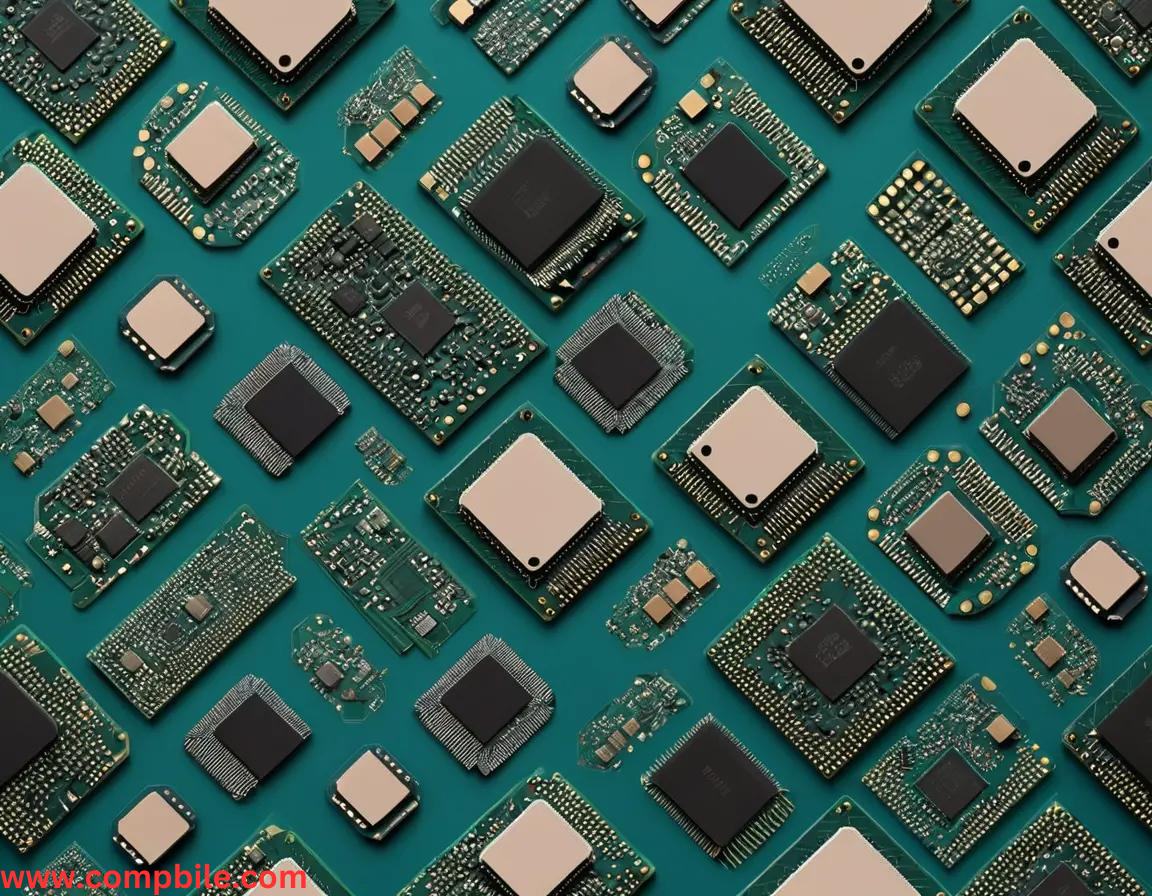- Chipsets CPU Chipset: This is the core chipset that connects the CPU to the rest of the system. It manages data transfers between the processor, memory, and peripheral devices.
- GPU Chipset: Graphics Processing Unit (GPU) chipsets handle the rendering of images, videos, and animations.
- Southbridge and Northbridge (legacy design):
- Northbridge: Historically, the northbridge chipset was responsible for high-speed components, such as the CPU, RAM, and GPU. It facilitated quick data transfer between these components.
- Southbridge: The southbridge chipset managed lower-speed peripheral devices such as USB ports, hard drives, audio, and network interfaces. These two chipsets were often used together to form a complete system.
- Modern chipsets combine these roles into a single chip due to advances in technology.
Functions of a Chipset
- Data Flow Management: It manages the data traffic between the CPU, RAM, GPU, and storage.
- Peripheral Control: Controls the input and output interfaces like USB, PC I e, SATA, and Ethernet.
- Overclocking and Performance Tuning: Some high-end chipsets allow users to overclock the CPU or GPU for better performance.
- Power Management: Regulates power supply to various components, ensuring optimal power consumption.
Chipset Architecture and Design
Modern chipsets are typically designed as a System on a Chip (SoC) or as multiple integrated chips.
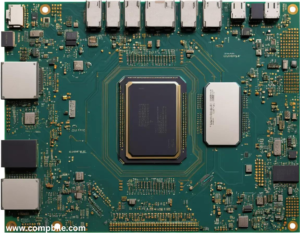
System on a Chip (SoC)
- Definition: An SoC integrates multiple components (CPU, GPU, RAM controller, I/O controllers, and more) onto a single chip.
Common in Mobile Devices: SoCs are most commonly used in smartphones, tablets, and even some laptops. For example, Apple’s A-series (iPhone/iPad), Qualcomm’s Snapdragon, and Samsung’s Exynos are all SoCs. - Advantages: SoCs reduce the number of components needed for a device, making it more power-efficient and compact. They are optimized for specific tasks, leading to better performance per watt.
Discrete Chipsets
- Definition: A discrete chipset is made up of separate chips responsible for different tasks. For example, in desktop motherboards, separate chips control the CPU, memory, I/O, and networking.
- Legacy Design: In older systems, chipsets were divided into the Northbridge and Southbridge (as mentioned before). Northbridge would handle high-speed components like RAM and CPU, while Southbridge would control lower-speed components like storage and peripherals.
- Modern Approach: Today, modern chipsets have largely integrated these components into one piece, especially for lower-power and mobile devices. But in performance-oriented desktop systems (especially Intel and AMD), there are still multi-chip solutions for optimal processing power.
Chipsets in Different Devices
1. Desktop and Laptop Chipsets
- Functionality: In traditional PCs and laptops, chipsets manage the communication between the CPU, memory, storage devices (HDD/SSD), and peripheral devices (USB, PC I e slots, and more).
- Evolution: Over the years, Intel and AMD have moved to more integrated chipsets that combine both Northbridge and Southbridge functions. For example, Intel’s 9th and 10th Gen chipsets (Z390, Z490) combine these roles into a single chip.
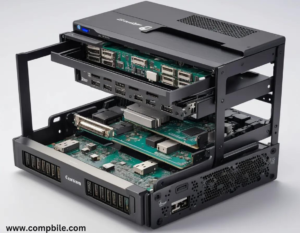
Popular Chipsets: For Intel
- Z-Series: High-end motherboards for enthusiasts and gamers (e.g., Z490, Z590).
- B-Series: Mid-range options (e.g., B460, B560).
- H-Series: Budget boards for mainstream use (e.g., H410, H470).
For AMD:
- X-Series: High-end chipsets like X570, designed for power users and overclocking.
- B-Series: Mid-range options like B550, B450.
- A-Series: Entry-level options like A520.
2. Mobile Chipsets (SoC)
- Components: Mobile chipsets are typically SoCs that integrate the CPU, GPU, memory controller, baseband (cellular modem), and other components like Wi-Fi, Bluetooth, and camera controllers. These allow smartphones and tablets to have a high level of integration.
Examples:
- Apple: The A-series chips (A14, A15, A16) in iPhones and iPads are examples of highly integrated SoCs.
- Qualcomm Snapdragon: Widely used in Android devices, such as the Snapdragon 8 Gen 2 series.
- Samsung Exynos: Used in Samsung Galaxy devices.
- Why SoCs?: SoCs allow for higher power efficiency, lower heat dissipation, and better optimization for mobile apps. Because everything is integrated into one chip, they reduce the device’s overall size while improving performance and battery life.
3. Embedded Systems
- Chipsets are also commonly used in embedded systems (e.g., automotive electronics, industrial equipment, home appliances).These systems may use SoCs or specialized chipsets that combine specific functionalities to meet particular needs, such as managing sensors, processing data, and controlling devices.
4. Gaming Consoles
- PlayStation, Xbox, and Nintendo Switch all use custom-designed SoCs or chipsets. These consoles need high-performance CPUs and GPUs, often tightly integrated into a single chip to handle gaming, video rendering, and network connectivity with minimal power consumption.
- Example: The PlayStation 5 uses a custom AMD SoC that combines a CPU based on AMD’s Zen 2 architecture and a GPU based on RDNA 2.
Chipset Key Features and Technologies
PC I e Support
- PCI Express (PC I e) is a high-speed interface used for communication between the CPU and various expansion cards, including graphics cards (GPUs), network cards, and storage devices.
- Modern chipsets support multiple PC I e lanes, ensuring sufficient bandwidth for components like high-performance GPUs, NV Me SSDs, and high-speed networking.
Overclocking
- Many high-end chipsets, especially from Intel (Z-series) and AMD (X-series), allow users to overclock the CPU, memory, and sometimes the GPU. Overclocking boosts system performance beyond the manufacturer’s standard specifications.
- Chipsets with overclocking support typically provide more robust power delivery systems and finer control over voltage and frequency.
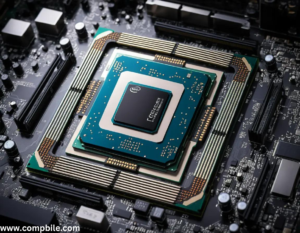
Storage Interfaces
- Chipsets manage the connections between the CPU and storage devices (SATA for HDD/SSDs, NV Me for high-speed solid-state drives).
- This standard offers significantly faster speeds compared to older SATA-based drives.
Networking and Connectivity
- Chipsets often manage onboard network interfaces, such as Ethernet (wired), Wi-Fi, and Bluetooth connectivity.
- Some high-end chipsets even support Wi-Fi 6 and 5G, especially in mobile devices and next-gen PCs.
USB and Audio Management
- Chipsets handle multiple USB ports (USB 2.0, 3.0, 3.1, USB-C) and audio interfaces, allowing users to connect peripherals such as keyboards, mice, speakers, and external drives.
- They may also support specialized audio technologies like Dolby Audio or Hi-Fi audio for enhanced sound quality.
Emerging Technologies in Chipsets
AI and Machine Learning Integration
- This allows devices to perform tasks like voice recognition, image processing, and personalized experiences more efficiently.
- For example, Apple’s A14 and A15 chips have a Neural Engine dedicated to machine learning tasks.
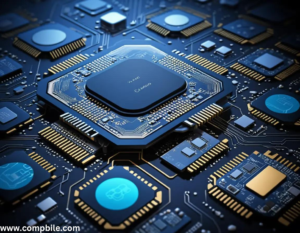
5G and Connectivity
- Qualcomm’s Snapdragon 8 series, for instance, includes 5G integration, as well as support for Wi-Fi 6/6E, offering faster and more stable wireless connections.
Security Features
- Chipsets now include more security functions, like secure boot, hardware encryption, and TPM (Trusted Platform Module). These features ensure secure authentication and data integrity.
Quantum Computing
- While still in its early stages, quantum computing promises to revolutionize processing capabilities.
Get artical on pdf file… click now
………….. Chipsets …………..

